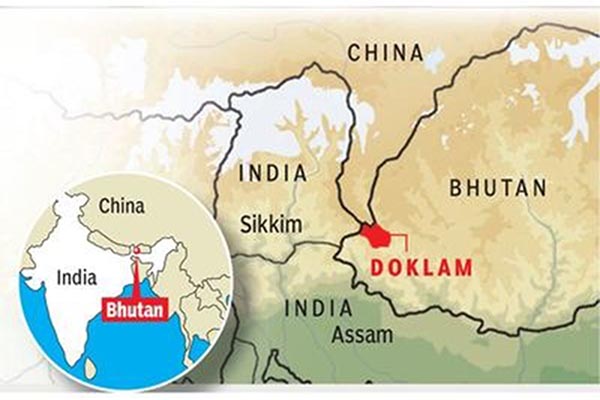Tibetet Segítő Társaság Sambhala Tibet Központ
Tibet Support Association Sambhala Tibet Center
székhely / telephely H-Budapest I. Attila út 123..
(00-36) 70 431 9343 (00-36)70 944 0260 (06-1)782 7721
sambhala@tibet.hu www.tibet.hu tibetpress.info
Facebook/Sambhala Tibet Központ Facebook/Tibett Segítő Társaság
MagnetBank/ 16200010-00110240
IBAN/HU94 16200010 00110240 00000000 SWIFT/HBWEHUHB
(1%) adószám/ 18061347-1-41
nyitva tartás/hétköznap 12.00-20.00 hétvégén előadás függő
» Retro» Tibeti művészet» Interjú» Levelek» Tibet Press» Tibet Press English» Dharma Press» Human Rights» Világ» Kína» Magyar» Ujgur» Belső-Mongólia » KőrösiCsoma» Élettér» Határozatok» Nyilatkozatok» tibeti művészet» lapszemle.hu» thetibetpost.com» eastinfo.hu» rangzen.net» ChoegyalTenzin» tibet.net» phayul.com» DalaiLama.com» vilaghelyzete.blogspot.com» Videók» Linkek» TibetiHírek» Szerkesztőség
Az első téli tartózkodáskor 1800 kínai katona táborozik Doklamnál
2017. december 13./TNN/Tibet Sun/TibetPress
Jelenleg csak angolul olvasható. Magyarul később.
eredeti cikk
By Rajat Pandit 
Around 1,600 – 1,800 Chinese troops have now virtually established a permanent presence in the Doklam area, near the Sikkim-Bhutan-Tibet trijunction, with the construction of two helipads, upgraded roads, scores of pre-fabricated huts, shelters and stores to withstand the freezing winter in the high-altitude region.
Indian security establishment sources said while India “achieved its strategic objective” of not letting China extend its existing road in Doklam (or the Dolam plateau) southwards towards the Jampheri ridge, the fallout has been “the almost permanent stationing of People’s Liberation Army (PLA) troops in the region”.
“Earlier, PLA patrols would come to Doklam, which is disputed between China and Bhutan, between April-May and October-November every year to mark their presence and lay claim to the area before going back,” said a source.
“Now, after the 73-day eyeball-to-eyeball troop confrontation at Doklam between India and China ended on 28 August, the PLA troops have stayed put in what we consider to be Bhutanese territory for the first time this winter. But the status quo prevails at the earlier face-off site,” he added.
This fits in with what the Army chief, General Bipin Rawat, meant when he warned in September that China would continue with its efforts to nibble away disputed territories through “salami slicing”, muscle-flexing and other measures. With Indian troops deployed in tactically dominating positions in the trijunction region, China is keen to usurp Doklam to add strategic depth to its narrow Chumbi Valley, which juts in between Sikkim and Bhutan.
India in the past never objected to Chinese military patrols in Doklam but was forced to intervene in mid-June when PLA troops attempted to disrupt the status quo by constructing a road that would have had serious security implications for it.
Indian soldiers came down the ridge slope from their Doka La post to cross into Doklam on 18 June to physically block Chinese troops from constructing the road towards Jampheri ridge, which overlooks India’s militarily vulnerable Siliguri corridor, or the so-called “Chicken’s Neck” area.
It triggered the face-off at Doklam, leading both the countries to move forward additional infantry battalions as well as armoured, artillery, missile and air defence units to back their small number of troops on the actual stand-off site, as was then reported by TOI. The volatile situation was finally defused on August 28 after hectic diplomatic parleys, with the rival troops disengaging and pulling back over 150 metres from the faceoff site. It paved the way for PM Narendra Modi to attend the Brics summit in Xiamen, China, from 3 to 5 September.
Since then, there has been relative calm at the face-off site in Doklam, with the rival troops separated by a distance of well over 500 metres, but both India and China continue to maintain stepped-up force levels along the Line of Actual Control. Apart from constructing accommodation for troops and helipads, China has also upgraded its existing motorable road in Doklam around 10 km north and east of the earlier face-off site. “But the PLA has not undertaken any fresh road construction activity southwards towards the Jampheri ridge,” said a source.
Chinese President Xi Jinping further consolidated his power through the 19th congress of the Chinese Communist Party in October with a second five-year term and elevation to the status of party founder Mao Zedong and his successor, Deng Xiaoping. “We will have to wait and watch how things develop in the months ahead,” the source added.
